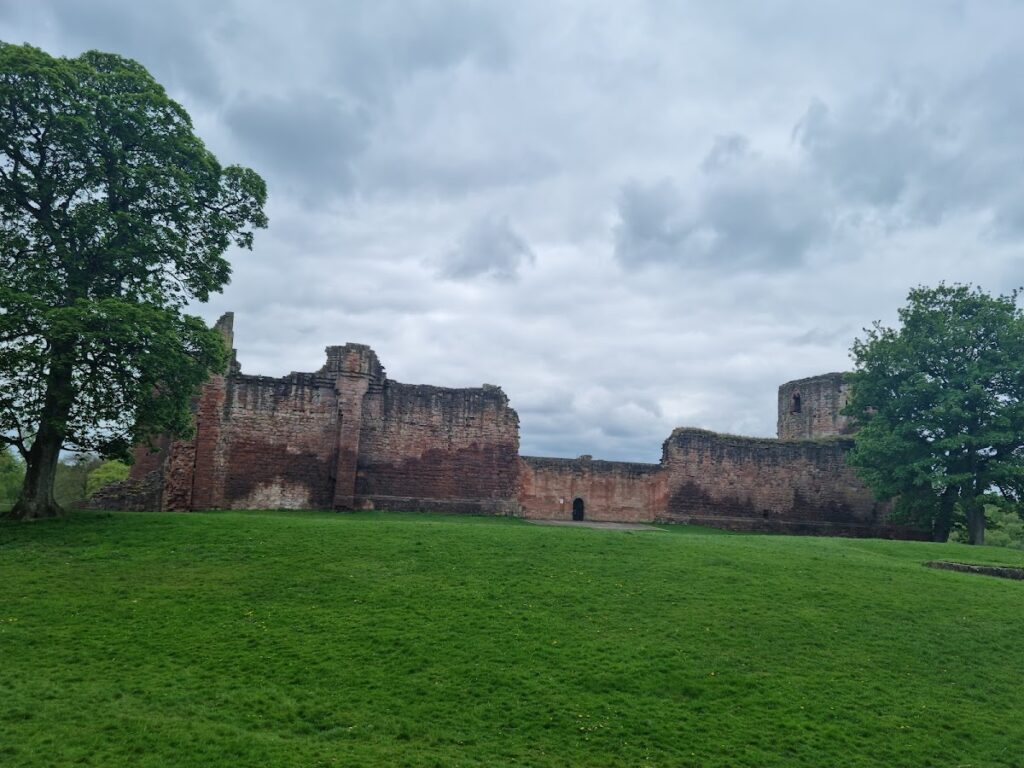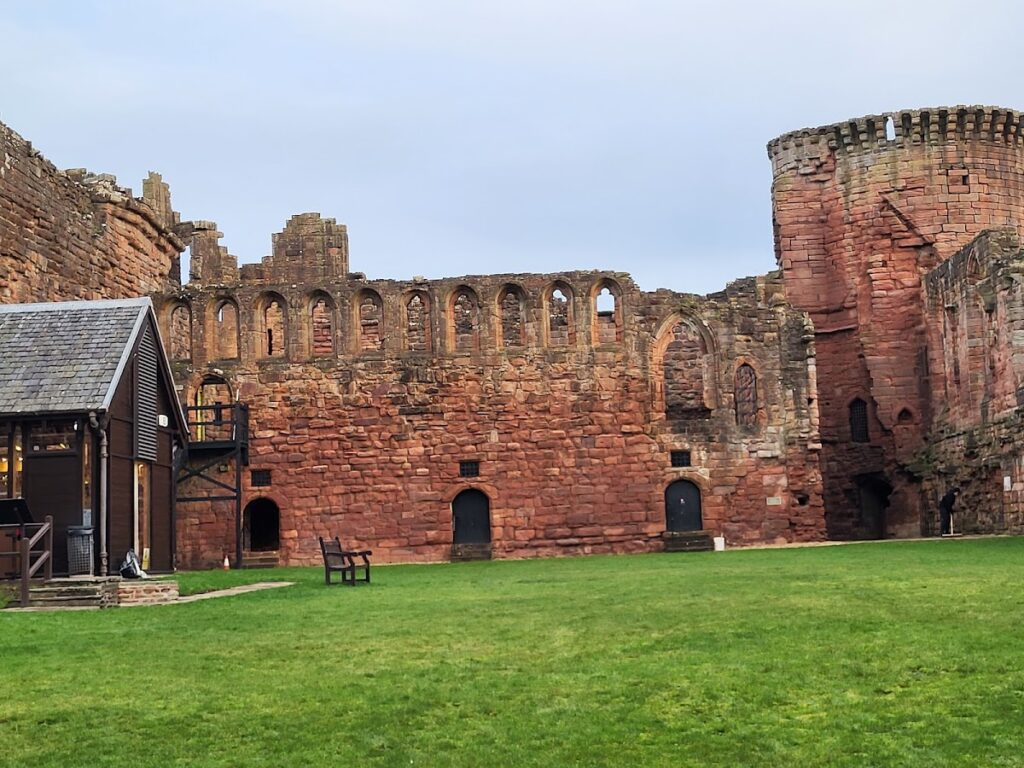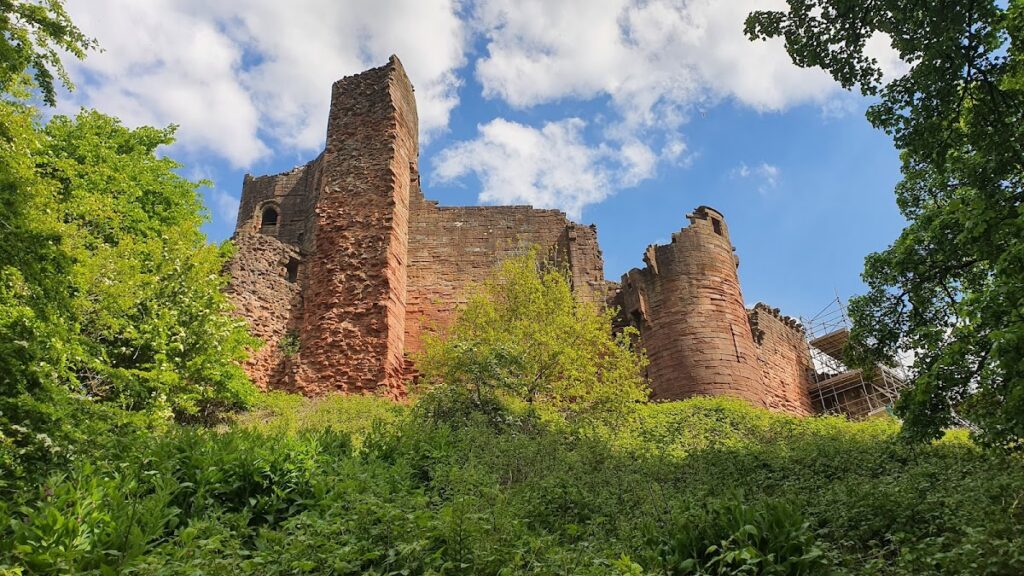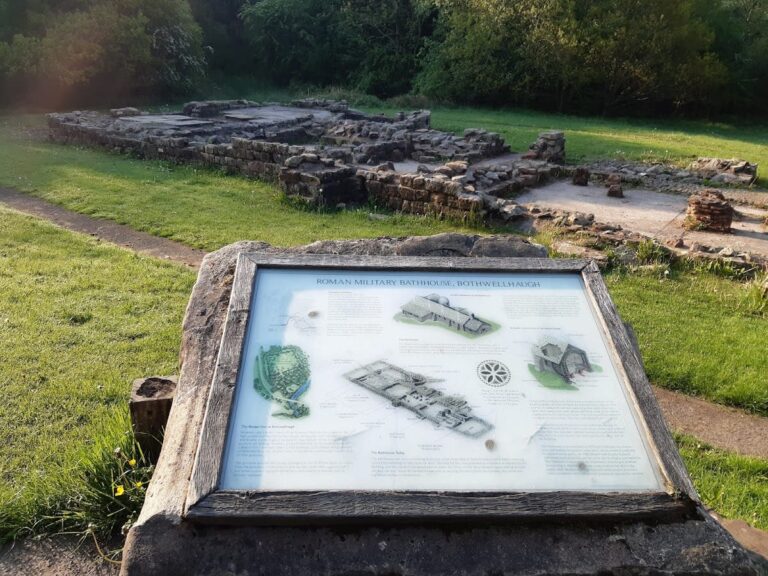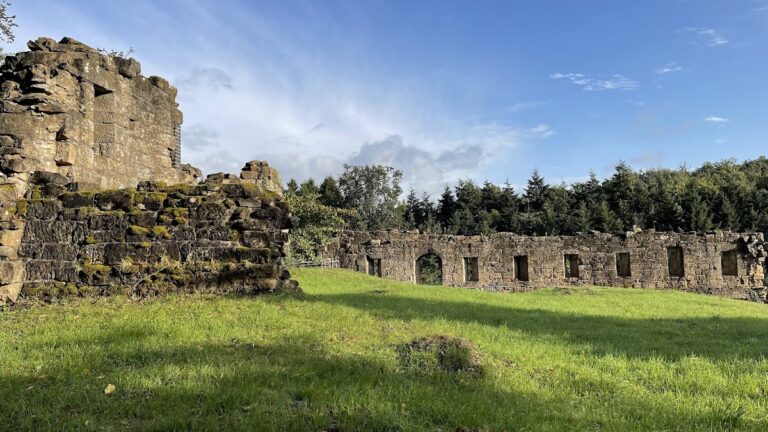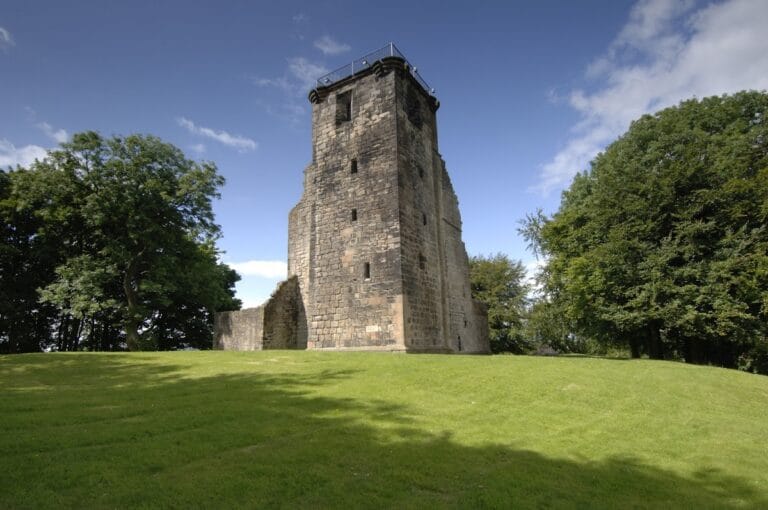Bothwell Castle: A Medieval Scottish Fortress Near Uddingston
Visitor Information
Google Rating: 4.3
Popularity: Low
Google Maps: View on Google Maps
Official Website: www.historicenvironment.scot
Country: United Kingdom
Civilization: Unclassified
Remains: Military
History
Bothwell Castle is a medieval fortress situated near Uddingston in Scotland. It was constructed by the Scottish civilization during the 13th century to oversee a strategic crossing of the River Clyde.
The land known as the barony of Bothwell was first granted in the mid-1100s by King David I to David Olifard, the Justiciar of Lothian. By the mid-13th century, ownership had transferred to Walter de Moravia, or Walter of Moray, who began building the castle as a stone stronghold. At the outbreak of the Wars of Scottish Independence in 1296, construction was incomplete. The main cylindrical donjon (a type of keep), a prison tower, and a short curtain wall had been built, while other sections relied on timber defenses such as palisades.
During the evolving conflict between Scotland and England, Bothwell Castle changed hands multiple times. King Edward I of England captured it early in the wars and used it as a forward base. Between 1298 and 1299, Scottish forces laid siege to the castle for over a year. Edward I reclaimed it in 1301 by bringing a large army equipped with siege engines. The castle served as English headquarters under Aymer de Valence until the tide turned.
Following Robert the Bruce’s victory at the Battle of Bannockburn in 1314, the castle sheltered English nobles. However, Sir Walter FitzGilbert, the Scottish constable of Bothwell, surrendered the fortress to the Scots, who deliberately damaged it to prevent its re-occupation. Despite this, the English reoccupied and repaired the castle briefly during the 1330s under Edward III. The Scottish leader Sir Andrew Murray recaptured it in 1337 and again slighted the fortress by tearing down part of its keep and casting the debris into the nearby river. The castle lay largely in ruins until restoration efforts began in the 1360s.
Restoration was initiated by Archibald Douglas, known as “the Grim,” who married into the Bothwell family in 1362. He repaired the donjon and completed defensive curtain walls. His son, the 4th Earl of Douglas, expanded the castle with a Great Hall, a chapel, and new towers by 1424. Ownership remained with the powerful Douglas family, also called the “Black Douglases,” until they lost their titles in 1455. Subsequent custodians included Lord Crichton, Sir John Ramsay, and Patrick Hepburn, who became the first Earl of Bothwell. In 1492, Hepburn exchanged the castle with Archibald Douglas, the 5th Earl of Angus, known as “Bell-the-Cat.”
The castle stayed in the Douglas family line for centuries and saw some modifications in the late 17th century when Archibald Douglas, the 1st Earl of Forfar, demolished part of the north-east tower to reuse its stone for a nearby mansion. After the death of the 2nd Earl of Forfar in 1715, ownership-returned to senior branches of the Douglas family and eventually passed to the Earls of Home. The 13th Earl of Home placed Bothwell Castle under state care in 1935. Today, it is recognized as a scheduled monument and preserved for its historical significance.
Remains
Bothwell Castle sits on a prominent high promontory overlooking a sweeping bend of the River Clyde. Its roughly rectangular layout is defined by thick curtain walls punctuated with round towers at key points, reflecting defensive design typical of Scottish medieval strongholds.
At the heart stands the imposing cylindrical donjon dating back to the 13th century. Originally soaring about 25 meters (82 feet) with walls nearly 4.6 meters (15 feet) thick, this great keep contained four floors accessed by a wooden drawbridge crossing a moat on its western side. Inside, battlements provided defensive positions, and a deep six-meter well ensured water supply. Part of the donjon’s west side was deliberately demolished in the 14th century during one of the castle’s intentional slightings, leaving that portion collapsed into the river below.
Encircling the courtyard, the curtain walls were thickened and reinforced during later medieval phases. Towers anchor the south-east and south-west corners, enhancing security and control of access. Near the donjon in the south wall stands the three-story prison tower, notable for its “prison hole,” an opening used to securely confine prisoners. Close by, a 14th-century postern gate bears the heraldic arms of the Douglas family, indicating their historic tenure. A latrine tower dating from the 15th century connects to the now-lost southern wing, suggesting complex domestic arrangements.
The south wing preserves the remains of a chapel on its first floor, reflecting a place of worship integrated within the castle. This wing culminates in a three-story south-east tower topped with corbelled battlements, a decorative and functional feature where projecting stone supports form the parapet.
On the castle’s east side, the 15th-century Great Hall occupies the first floor, with three storage rooms below serving the household’s needs. The kitchen area survives only as evidence of a fireplace and oven, indicating where food preparation took place within the fortress.
The north-east tower once housed the Douglas family and featured an unusual drawbridge entrance. This tower suffered significant destruction around 1700, yet its distinctive access method remains legible in the ruins. To the north of the main enclosure, foundations reveal the footprint of an unfinished 13th-century extension, including a gatehouse flanked by two latrine towers and a round tower complete with a well.
The original north gatehouse was dismantled circa 1700, but the present-day north wall was reconstructed during restoration efforts in 1987, aiming to stabilize the ruins and protect them for future study.
Overall, Bothwell Castle’s surviving elements illustrate a complex history of construction, warfare, and adaptation. Its military architecture, including the massive round keep, curtain walls with flanking towers, and specialized buildings like the prison tower and chapel, reveal the evolution of defensive and residential needs in medieval Scotland.

